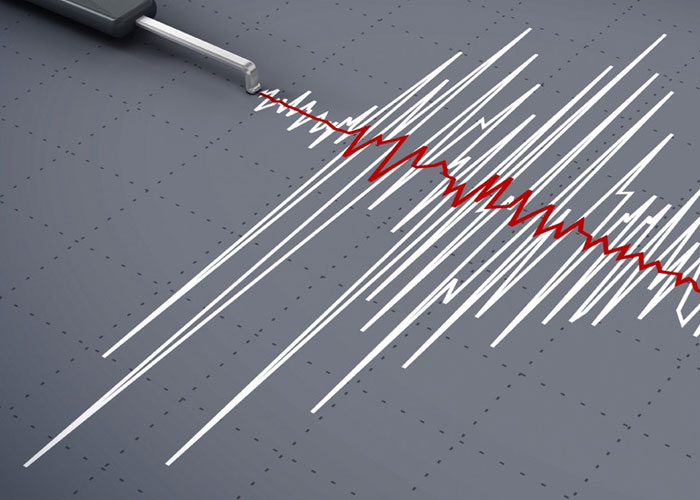Undoubtedly Bangladesh is one of the most earthquake prone countries in the world. Cities like Dhaka, Chittagong, Sylhet, Rangpur, Mymenshing & Cox’s Bazar may be considered most vulnerable to seismic hazard. Specifically, Dhaka is one of the most vulnerable mega-city in the world. Since earthquake is not very frequent in our country like Japan, USA or China we are not aware and prepared as we are for flood and cyclone. An infrequent and forgettable hazard causes severest damage. That is why we have to be very careful about the earthquake risk mitigation and response mechanism.
Common concept of disaster risk reduction has three components- prevention, mitigation and preparedness. Since prevention of earthquake hazard is beyond the capacity of human being we can simplify the concept of earthquake risk reduction by mitigation and preparedness. As on response the concept may be immediate search & rescue, emergency management followed by short and long term rehabilitation, reconstruction and redevelopment. To act timely we have to be prepared in an organized and disciplined manner. Therefore we have no way but to have earthquake disaster management plan at all level as an annex/enclosure to National Disaster Management Plan which we are going to have within a very short period.
Earthquake Disaster Management Plan should have two parts – one is earthquake risk mitigation plan and the other is earthquake response/contingency plan. There shall be one national level plan and local level plan for each community (e.g. ward level of city corp.) and each organizations/institutions such as Armed Forces Division(AFD), City Corporation, City Development Authority, Fire Service & Civil Defense Department, Water, Power & Gas Supply Authority, Public Works Department(PWD) and so on. Culture shall have to be developed for continuous sharing and updating such plans to get optimum results. Plans should address all the associated elements and it must be lucid and implementable rather than a shelf material.
Here we can cite guideline for key contents and/or functions of Earthquake Disaster Management Plan.
For Earthquake Risk Mitigation Plan:
The plan should address four major areas of earthquake risk reduction:
- Defining the earthquake hazard
- Learning about earthquake hazards, preparedness, and risk mitigation
- Planning and building for earthquakes
- Living with earthquakes
Defining earthquake hazards should be addressed in the Geo-science section which includes mapping faults, characterizing the size and occurrence of earthquakes along faults, and expanding the seismic station network. Earthquake awareness and education is the major focus of communicating earthquake hazards, preparedness for earthquakes, and earthquake risk mitigation to citizens, professionals, and decision makers. Part of the strategy of this task should be in the Schools Earthquake Awareness Program. In making a more seismically resistant built environment, the plan addresses issues of land use and improvements for existing buildings and new construction, including the mitigation of nonstructural hazards, and utilities and transportation. For living with earthquakes, the plan includes the enhancement of earthquake preparedness, emergency response, and recovery from an earthquake disaster.
Key issues to address:
Awareness and Education
Objective 1: Increase Knowledge to make Effective Decisions
Media and Public Information
Objective 1: Increase Knowledge to make Effective Decisions
Preparedness
Objective 1: Increase Earthquake Consequence Understanding
Emergency Response
Objective 1: Improve Emergency Management, Response and
Recovery Systems
Recovery
Objective 1: Develop Country, City Corporation, and Community Level Plans for Recovery after a Major Earthquake.
Objective 2: Rapid and Effective Post-Earthquake Assessment of Structures
Geosciences
Objective 1: Develop Geo-science Information
Objective 2: Full Application of Geosciences
Objective 3: Improve Seismic Safety Practices
Land Use
Objective 1: Develop in and Use Areas that Are Relatively Safe or can be Made Safe from Seismic Hazards.
Lifeline Utilities
Objective 1: Ensure only short term interruptions
Transportation and Bridges
Objective 1: Ensure only short term interruptions
Objective 2: Replace or Retrofit Critical Bridges
Existing Buildings
Objective1: Upgrade Vulnerable Buildings to Acceptable levels of Performance
Objective 2: Mitigate Nonstructural Risks
Objective 3: Inventory of Potentially Seismically Dangerous Buildings
New Construction
Objective 1: Upgrade Understanding of Building Design to Achieve Acceptable Levels of Performance
Dams
Objective 1: Replace or Retrofit Critical Dams
Plan Updating
Objective 1: Annual Review
For Earthquake Response Plan:
Response Requirements:
In the event of a damaging earthquake, a large number of response requirements will be needed for effective coordination and response of all agencies at all levels of government and in the private sector. In light of this a functional organization for response will be used to guide the process. This will identify, define and assign responsibilities to lead and support agencies within the plan. The emergency response functions are assigned to primary and supporting agencies that would have that responsibility within the plan.
Key issues to address:
Search and Heavy Rescue
Health Service & Welfare
Request for External assistance for search and rescue
Law Enforcement & Security
Emergency Shelter & Mass Care
Fire-fighting/Rescue
Communications
Damage Assessment
Identification Care & Disposal of Dead
Hazardous Material Response
Relief Coordination
Relief distribution
Health & Welfare of Visitors
Building inspection & demolition
Inspection of Bridges overpasses, debris, etc
Inspection of Silos, smoke stacks petroleum tank Farms etc
Inspection of dams, reservoirs etc
Public Information announcements &warnings
Transportation
Finance and Claims
Restoration
Utilities
Pollution of Waterways & Marine Environments
Below a Sample Checklist for
EARTHQUAKE PREPAREDNESS AND MITIGATION
(For National and Local Govt. level)
- Has a hazard vulnerability analysis been conducted (including the location of hazardous materials) to determine the potential threat to the area?
- Has a seismic safety plan been developed that addresses land use and development decisions?
- Have potentially hazardous buildings been identified?
- Is there a plan to reduce the hazards posed by such (older unreinforced masonry & concrete) buildings?
- Have nonstructural hazards been identified and corrected in your facilities?
- Have specific mutual aid agreements between local and/or special purpose governments been adopted?
- Do your employees know that whether all public employees are emergency services workers at the time of an earthquake, if so do they know their roles?
- Have employees been trained in earthquake preparedness for themselves and their families?
- Have personnel been trained to do basic damage assessment?
- Is there a coordinated disaster management plan that incorporates all departments and managers?
- Have potential sites been identified for use as mass care centers? Have emergency supplies been stockpiled? Have personnel been trained to staff the centers?
- Have community programs been initiated which stress the importance of home and individual planning?
- Are there means for developing and distributing literature to private and public sector groups in the community? Are there special programs which deal with preparedness for the disabled, elderly and other most vulnerable population?
- Have leaders in the business community been enlisted to participate in private/public preparedness programs?
- Have community programs been coordinated with individual school plans for earthquake safety?
- Have procedures been established for using volunteers before, during and after the earthquake?
RESPONSE:
- Have all agencies that could offer assistance at the time of an earthquake been involved in pre-event planning?
- Have clear roles and responsibilities been established for planners, responders and managers?
- Has a coordinated command system been planned to ensure effective response at multiple sites?
- Have procedures been set up to quickly assess the need for outside resources?
- Have alternative strategies for damage assessment been developed?
- Has redundancy been built into the communications systems?
- Have attempts been made, in emergency shelter or evacuation planning, to be realistic about the population’s determination to stay near their homes or to stay with families and friends?
- Are shelter facilities equipped for the health and sanitation needs of reqd. numbers of people?
- Have potential casualty collection points for triage and transport of the injured been identified?
- Has the positive role of the media in providing public information before, during and after the earthquake been recognized?
- Do city agencies have emergency supply kits in individual buildings?
- Have potential sites been identified for debris disposal?
- Have procedures been set up for timely inspection and condemnation of damaged structures?
RECOVERY:
- Is there a plan to organize the recovery–such as a suggested recovery authority with functions and possible assignments?
- Will special ordinances and legislation be required? Have such ordinances been drafted?
- Are there plans for assuring the continuance of government and business functions? Such contingency plans should assume the possible loss of records, supplies and inventories as well as of building space.
- Are there plans for providing immediate disaster assistance, such as temporary housing, mass feeding, financial assistance, and psychological counseling to victims and families of victims?
- How will public information needs to be handled? Are there procedures to help people locate the missing? Are there procedures to notify employees whether and where to return to work?
- Are there plans for hazard abatement e.g. to inspect, post, close and demolish hazards that are a threat to public safety?
- Have priorities been established for restoration of services?
- Is there a plan to document and tally costs associated with the earthquake? Such information will be needed to substantiate disaster assistance requests and insurance claims, and to speed payment to vendors and mutual aid partners.
SAMPLE CHECKLIST FOR
EARTHQUAKE PREPAREDNESS AND MITIGATION
(For School)
- Does your school have a disaster plan, and is your staff aware of their roles and responsibilities under the plan? Do they realize they may be responsible for the students for up to 72 hours after a disaster occurs?
- Is your staff aware of the fact that, all teachers may be Disaster Service Workers, and if the disaster occurs during school hours their initial responsibility is with the school?
- Does your staff know the location of the main gas, electricity and water shut-off valves? Who has been instructed to check their status, and turn them off if the need arises?
- Has a map of the school and school grounds been made and distributed to all staff members which includes basic evacuation procedures and potential earthquake hazards to avoid?
- Have you made a list and map of the location and availability of First Aid kits, sleeping materials and other emergency supplies?
- What nonstructural hazard mitigation measures have been completed at your school:-
6.1. have bookshelves, file cabinets and free-standing cupboards been bolted to the wall, or arranged to support each other?
6.2. – have heavy items been removed from the tops of bookshelves and cupboards?
6.3. – have the windows in the classrooms and other campus buildings been equipped with safety glass, or covered with protective film?
6.4. – are the ceilings, overhead lights and air ducts secured to the structure of the building?
- Have inventories been made of hazardous chemicals in areas such as the science building (practical room) and maintenance shops? Has anyone been appointed to check on these chemicals after an earthquake?
- Does the school have any arrangements with structural engineers or local qualified contractors who will report to the school directly after a disaster to determine the damage, and the need to evacuate?
- Do you know if your school has been designated as a potential mass care shelter? Has your staff been trained in managing such a shelter?
- Does your school have a back-up communications system such as radio, ham operation, or two-way radio to communicate with local emergency services? Who is trained to use this equipment?
- Is there an earthquake preparedness program in your curriculum?
- Are their any programs established between the school and Parent Teacher’s Association (PTA) which encourage the Home Plan, and discuss the school’s policies regarding student release, absenteeism, etc.?
- How and where are you storing vital data and records? Do you have back-ups of important data stored in an off-site location?
EMERGENCY RESPONSE:
- Has a central “command post” or other central planning area been identified which contains maps of the campus, facilities and hazards in the area, an enrollment sheet for the current year, First Aid materials, and other tools necessary to manage the emergency response activities after a disaster?
- Do the teachers have basic operating procedures to follow such as:
2.1. – knowing how to implement the basic “duck and cover” actions when an earthquake begins?
2.2. – having an emergency kit near the desk which contains a roll sheet, special medical information and student release information?
2.3. – when to evacuate, and when to remain in the classroom after an earthquake?
2.4. – knowing how to administer First Aid to those seriously wounded, and to comfort those in shock, frightened or hysterical?
2.5. – if some students are seriously injured and an evacuation is in order, what to do with the injured?
2.6. – what check-out procedures should be taken before a student is released to an adult?
2.7 – working in a “buddy system” with another teacher and class, so that if one teacher is injured the other could take care of the students and get them to safety?
- What are your immediate damage assessment procedures?
- Have you developed emergency sanitation procedures?
- Has a spokesperson been appointed to serve as liaison with the press after a disaster?
- Who has been designated for search and rescue, and have they received training?
RECOVERY:
- Do you have information on record keeping requirements and financial aid sources for disaster relief available to your school?
- What are your absentee policies for teachers/students after a disaster?
- Have you contracted with, or made inquiries to mental health organizations to provide counseling to students after an earthquake?
- Are you aware of, or prepared to undertake alternative teaching methods for students unable to return immediately to classes: correspondence classes, tele-teaching, group tutoring, etc?
- What will be your plan for conducting classes if some of your facilities are damaged, half-day sessions, alternative sites, portable classrooms?








